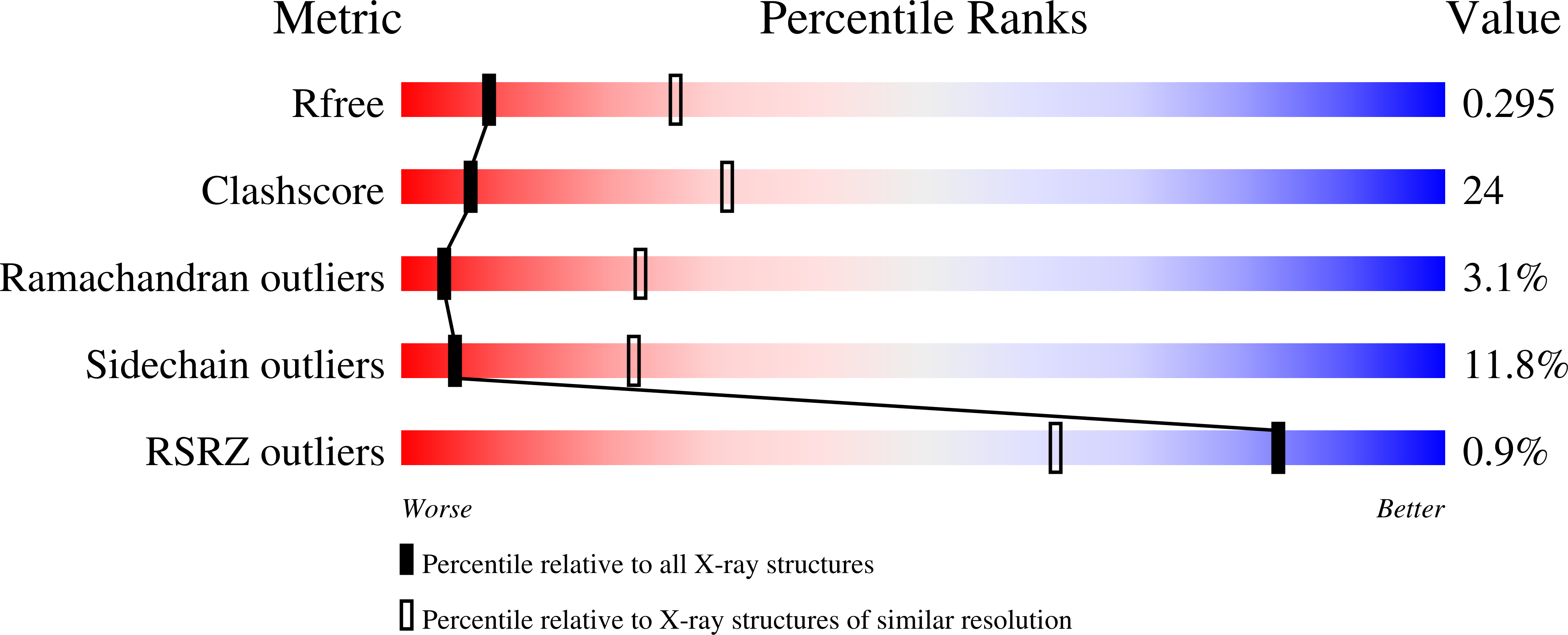Gelsolin Domains 4-6 in Active, Actin-Free Conformation Identifies Sites of Regulatory Calcium Ions
Kolappan, S., Gooch, J.T., Weeds, A.G., McLaughlin, P.J.(2003) J Mol Biol 329: 85-92
- PubMed: 12742020
- DOI: https://doi.org/10.1016/s0022-2836(03)00383-8
- Primary Citation of Related Structures:
1NPH - PubMed Abstract:
Structural analysis of gelsolin domains 4-6 demonstrates that the two highest-affinity calcium ions that activate the molecule are in domains 5 and 6, one in each. An additional calcium site in domain 4 depends on subsequent actin binding and is seen only in the complex. The uncomplexed structure is primed to bind actin. Since the disposition of the three domains is similar in different crystal environments, either free or in complex with actin, the conformation in calcium is intrinsic to active gelsolin itself. Thus the actin-free structure shows that the structure with an actin monomer is a good model for an actin filament cap. The last 13 residues of domain 6 have been proposed to be a calcium-activated latch that, in the inhibited form only, links two halves of gelsolin. Comparison with the active structure shows that loosening of the latch contributes but is not central to activation. Calcium binding in domain 6 invokes a cascade of swapped ion-pairs. A basic residue swaps acidic binding partners to stabilise a straightened form of a helix that is kinked in inhibited gelsolin. The other end of the helix is connected by a loop to an edge beta-strand. In active gelsolin, an acidic residue in this helix breaks with its loop partner to form a new intrahelical ion-pairing, resulting in the breakage of the continuous sheet between domains 4 and 6, which is central to the inhibited conformation. A structural alignment of domain sequences provides a rationale to understand why the two calcium sites found here have the highest affinity amongst the five different candidate sites found in other gelsolin structures.
Organizational Affiliation:
Structural Biology Group, Institute of Cell and Molecular Biology, Wellcome Centre for Cell Biology, The University of Edinburgh, Swann Building, King's Buildings, Mayfield Road, EH9 3JR, Scotland, Edinburgh, UK.















